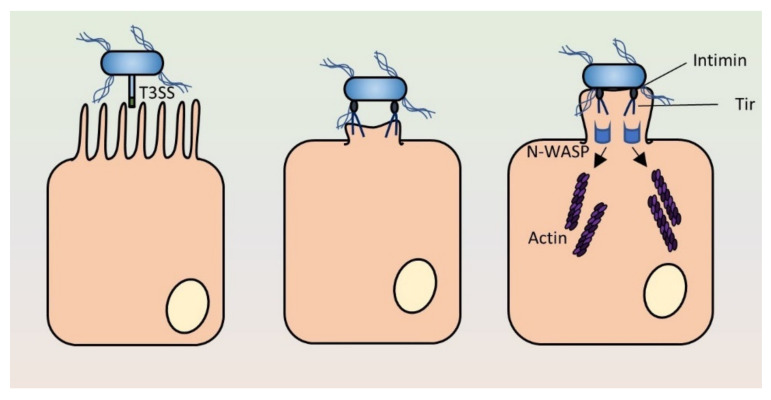Figure 3.
Schematic of the major steps in pedestal formation by attaching and effacing pathogens. The bacteria initially bind to the enterocytes via adhesins, allowing the Esc T3SS to inject effector proteins. These include Tir, which is inserted into the plasma membrane of the target cell where it binds to the inverse autotransporter intimin, present on the bacterial surface. The binding of intimin to Tir leads to intimate attachment and Tir clustering, resulting in recruitment of N-WASP, actin rearrangements and pedestal formation. Thus, the LEE-encoded T3SS and T5SS (intimin) act together to form the A/E lesion.
Schematic of the major steps in pedestal formation by attaching and effacing pathogens. The bacteria initially bind to the enterocytes via adhesins, allowing the Esc T3SS to inject effector proteins. These include Tir, which is inserted into the plasma membrane of the target cell where it binds to the inverse autotransporter intimin, present on the bacterial surface. The binding of intimin to Tir leads to intimate attachment and Tir clustering, resulting in recruitment of N-WASP, actin rearrangements and pedestal formation. Thus, the LEE-encoded T3SS and T5SS (intimin) act together to form the A/E lesion.

